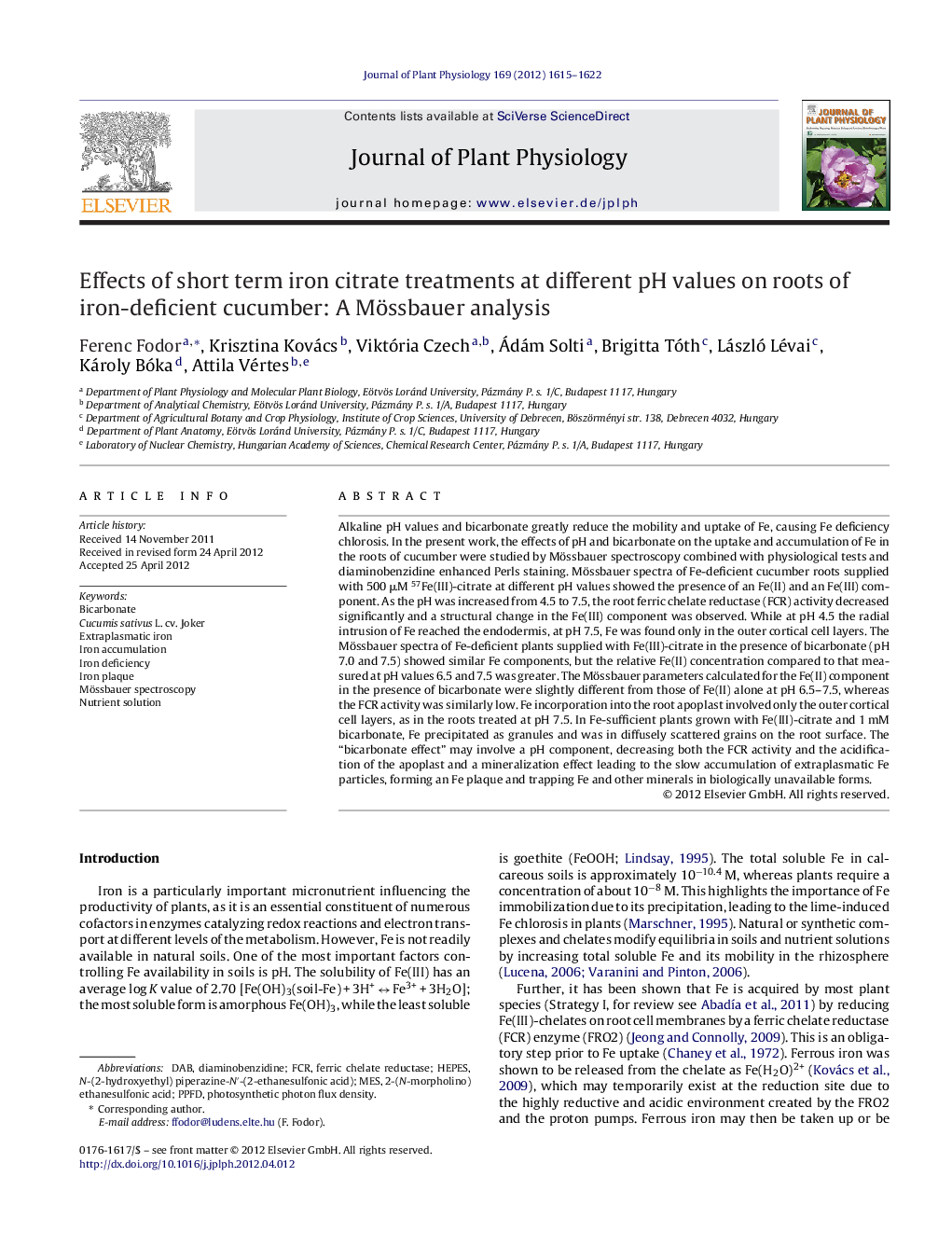| کد مقاله | کد نشریه | سال انتشار | مقاله انگلیسی | نسخه تمام متن |
|---|---|---|---|---|
| 2056253 | 1075812 | 2012 | 8 صفحه PDF | دانلود رایگان |

Alkaline pH values and bicarbonate greatly reduce the mobility and uptake of Fe, causing Fe deficiency chlorosis. In the present work, the effects of pH and bicarbonate on the uptake and accumulation of Fe in the roots of cucumber were studied by Mössbauer spectroscopy combined with physiological tests and diaminobenzidine enhanced Perls staining. Mössbauer spectra of Fe-deficient cucumber roots supplied with 500 μM 57Fe(III)-citrate at different pH values showed the presence of an Fe(II) and an Fe(III) component. As the pH was increased from 4.5 to 7.5, the root ferric chelate reductase (FCR) activity decreased significantly and a structural change in the Fe(III) component was observed. While at pH 4.5 the radial intrusion of Fe reached the endodermis, at pH 7.5, Fe was found only in the outer cortical cell layers. The Mössbauer spectra of Fe-deficient plants supplied with Fe(III)-citrate in the presence of bicarbonate (pH 7.0 and 7.5) showed similar Fe components, but the relative Fe(II) concentration compared to that measured at pH values 6.5 and 7.5 was greater. The Mössbauer parameters calculated for the Fe(II) component in the presence of bicarbonate were slightly different from those of Fe(II) alone at pH 6.5–7.5, whereas the FCR activity was similarly low. Fe incorporation into the root apoplast involved only the outer cortical cell layers, as in the roots treated at pH 7.5. In Fe-sufficient plants grown with Fe(III)-citrate and 1 mM bicarbonate, Fe precipitated as granules and was in diffusely scattered grains on the root surface. The “bicarbonate effect” may involve a pH component, decreasing both the FCR activity and the acidification of the apoplast and a mineralization effect leading to the slow accumulation of extraplasmatic Fe particles, forming an Fe plaque and trapping Fe and other minerals in biologically unavailable forms.
Journal: Journal of Plant Physiology - Volume 169, Issue 16, 1 November 2012, Pages 1615–1622